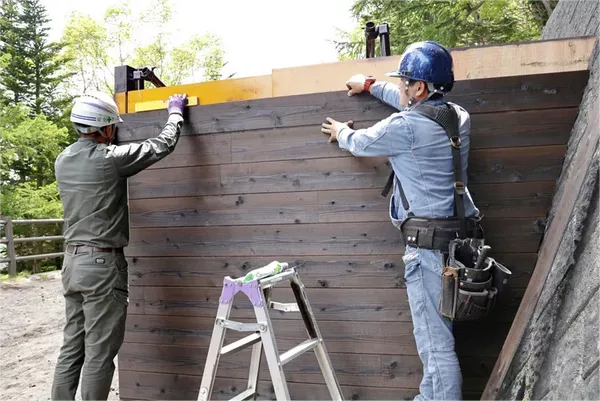A crowd-control gate has been installed halfway up Mount Fuji, aiming to manage the influx of climbers as the climbing season begins on July 1. However, the governor of Yamanashi Prefecture, one of the regions that host the mountain, has emphasized that further measures are necessary to address overcrowding on the lower slopes.
The gate’s installation is part of a new regulatory framework introduced by Yamanashi to tackle the mounting safety, environmental, and overcrowding issues on Mount Fuji. The gate will be locked from 4 p.m. to 3 a.m. to prevent those without overnight bookings at huts along the Yoshida trail from proceeding. This measure aims to curb “bullet climbing,” a practice where climbers rush to the summit without adequate rest, posing significant safety risks. The trail will be limited to a maximum of 4,000 climbers per day.
“These restrictions are essential to mitigate the dangers threatening climbers’ safety,” Yamanashi Governor Kotaro Nagasaki stated at a Tokyo news conference. He noted that the number of climbers this year is projected to exceed last year’s count of 137,236. “Overcrowding near the summit could lead to a catastrophic event, such as a domino effect of people falling,” he added.
Under the new system, climbers must book in advance and choose between a day hike or an overnight stay at one of the trail huts. A mandatory hiking fee of 2,000 yen is required, along with an optional 1,000 yen donation for conservation efforts. Climbers receive a QR code on their smartphones to be scanned at the gate, located at the fifth station, where the Yoshida trail begins. There are ten stations on the mountain.
Governor Nagasaki expressed confidence that these measures would alleviate overcrowding at higher elevations but acknowledged ongoing issues at lower levels. He proposed reducing over-tourism on the lower slopes and surrounding areas, potentially by introducing a mountain railway to the fifth station, which is currently accessible by cars and buses. He also suggested promoting traditional climbing routes from the mountain’s base.
In contrast, Shizuoka Prefecture, which also encompasses part of Mount Fuji, has not imposed mandatory hiking restrictions. Instead, it launched an online registration system on June 10, where climbers submit their hiking plans and are advised against climbing after 4 p.m.
Mount Fuji, a historic symbol of Japan, was once a pilgrimage destination. Today, it attracts tens of thousands of climbers who ascend to witness the sunrise, but the resultant litter, including plastic bottles and food waste, has become a significant concern.
In response to the surge in visitors, the town of Fujikawaguchiko in Yamanashi recently erected a large black screen along a sidewalk to block the view of Mount Fuji. This measure aimed to deter tourists who crowded the area to photograph the mountain appearing to sit atop a convenience store, a social media trend dubbed “Mount Fuji Lawson,” which disrupted local businesses and traffic.
Overtourism is not limited to Mount Fuji. Popular tourist destinations like Kyoto are also grappling with the influx of foreign visitors, partly driven by the weaker yen.

